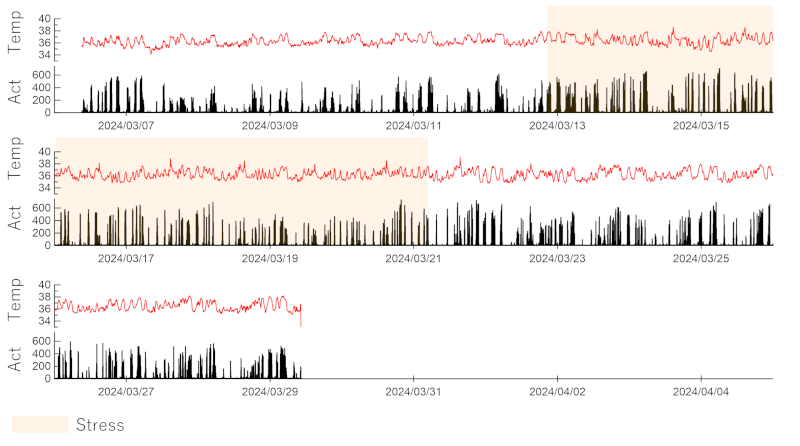Progress Report
Construction of an AIoT-based universal emotional state space and evaluation of well-/ill-being states[2] Constructing a Universal Emotional State Space
Progress until FY2024
1. Outline of the project
This project aims to construct a ‘universal’ emotional state space that transcends animal species. To achieve this, we measure a variety of psycho-physiological data from both wild-type mice and disease model mice (e.g., autism model mice exhibiting increased anxiety and fear-related behavior, or mice with susceptibility or resilience to depression) under various conditions, including application of stimuli (Social Defeat Stress:SDS) or drug administrations that induce emotional responses. By combining psycho-physiological data obtained from both mice and humans, we aim to construct a universal emotional state space with biological validity. This project comprises the following two research topics.
- 1. Development of universal emotional state estimation technology
- Summary: by combining IoT measurement data obtained from both mice and humans, we develop a universal emotional state space that transcends animal species and possesses biological validity.
- 2. Assessment of physiological data and emotional states in animals
- Summary: to construct a universal emotional state space, it is essential to obtain psycho-physiological data from animals. Therefore, we will measure a variety of physiological signals from both wild-type mice and disease model mice (e.g., autism model mice exhibiting increased anxiety and fear-related behavior, or mice with susceptibility or resilience to depression) under various conditions, including application of stimuli (Social Defeat Stress:SDS) or drug administrations that induce emotional responses.
2. Outcome so far
To construct a universal emotional state space across species, we explored methods for developing animal models based on existing human emotion estimation models (transfer learning approaches), as well as approaches for incorporating disease-model animal data into the construction of human emotion estimation models. Additionally, we collected foundational animal-model data and initiated analyses of the obtained datasets.
[Main Achievements by FY2023]
- An experimental protocol for the Social Defeat Stress (SDS) mouse model, a depression model was established.
- Surveyed a measurement system capable of continuously acquiring multiple physiological signals (e.g., electrocardiograms, body temperature, blood pressure, and acceleration) from mice over an extensive period, including the disease onset process.
[Main Achievements in FY2024]
We completed long-term, continuous physiological signal measurements (body temperature and activity levels) using a Social Defeat Stress (SDS) mouse model, including the progression toward depression onset, and have initiated data analysis. Patient data collection was also completed, and analyses to identify common indicators of ill-being through biological rhythm alterations are underway. Additionally, to compensate for delays in obtaining animal and patient data, we analyzed existing mouse vocalization data, yielding insights into cross-species universality of anxiety-related emotions via vocal signals. Furthermore, we proposed and successfully had accepted a classification challenge task involving autism-model mouse vocalization data for INTERSPEECH 2025, which is currently undergoing international collaborative analysis.

3. Future plans
We construct a universal emotional state space that transcends species by integrating measurement data from disease-model mice and humans, enabling biologically validated universal emotion estimation.
(NAKAMURA Toru: The University of Osaka
YAMAMOTO Yoshiharu: The University of Tokyo
TAKUMI Toru: Kobe University)